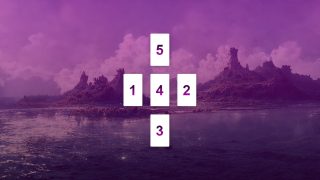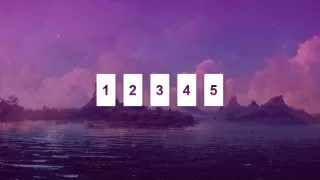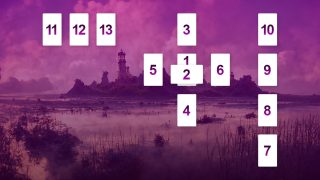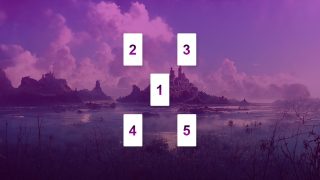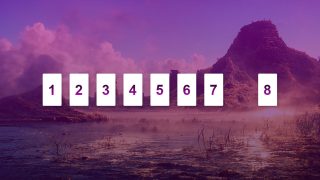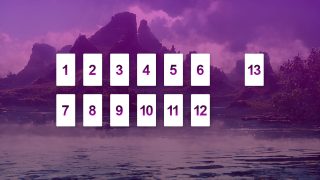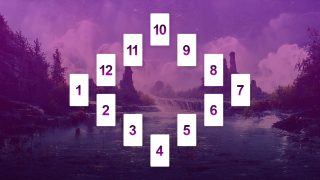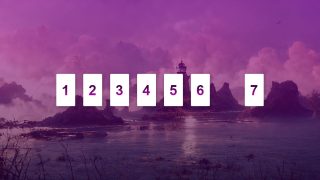There are as many tarot spreads as tarot readers. Tarot spreads are eclectic and adaptable to any topic.
Tarot spreads for guidance differ from tarot spreads for self-awareness. Some core elements make layouts effective.
One of the most common tarot spreads is the Celtic Cross. This spread’s appearance in a variety of tarot books makes it ubiquitous.
Tarot spreads for love include past life connections, finding love, and insight on strengthening your relationship. Tarot spreads range in size and number of cards.
Some tarot spreads follow a pattern that creates a shape like a heart, circle, or arrow. Other tarot spreads involve the entire deck, while some only include three cards.
Table of Contents [show]
Historical Tarot Spreads
No one knows precisely where tarot reading originated, but there are some theories about how cartomancy originated. So much lore and mythology surround tarot history, making it difficult to discern the first tarot spreads.
Yet the enduring tarot spreads historically include three-card readings and the Celtic Cross spread. Some believe historic tarot spreads were a game before fortune-telling.
Some of the earliest tarot spreads explored love and relationships. Finding a future spouse remains a popular topic for tarot layouts. Historic tarot spreads were used to explore spiritual vices and virtues.
Tarot reading evolved over the centuries and includes self-awareness, spiritual growth, and healing. Tarot spreads for shadow work have become popular since the 1960s.
Are you at a crossroads? A psychic reading can help guide you.
How To Make a Tarot Spread
You can find a plethora of tarot spreads online or in tarot books. But you can also learn to create your tarot layouts. The best tarot spreads have a few common elements.
The first thing to consider is the shape of your tarot layout. You can place cards in rows, columns, or both. You can also arrange the tarot cards to create shapes like stars, horseshoes, arcs, circles, or hearts.
Triangular tarot readings are popular because this shape has spiritual significance. The broad base and single card at the top are helpful in prioritizing.
Some tarot readers prefer simple spreads and don’t bother to create elaborate shapes. Whether you use a shape to reinforce the meaning of your reading, you must remember what each card placement represents.
Tarot spreads add nuance and meaning to your reading because each card’s placement has its meaning. The card’s placement combined with the card’s meaning creates the narrative of your reading.
Some advanced tarot readers do not use a spread. They place cards on a table one after the other and use a freestyle interpretation, yet this is difficult for new readers.
Once you decide on a topic for your reading, think of the details you want your tarot reading to cover. If you are doing a generic reading, your categories may be past, present, and future.
If your topic is a career, you may have many specific questions about your career. You may wonder where your career is heading in one month, three months, or six months. Each of these categories becomes a placement in your reading.
Likewise, you may wonder what strengths can enhance your career, what stands in the way of your career growth, and what could help you expand your prospects. Each of these questions becomes a placement in your spread.
Every time you think of a subcategory or question under the broad topic of your reading, you create a new placement in your spread. You can keep track of each placement’s meaning in a notebook until you become well-versed enough to remember the categories.
Now consider the setup of your spread. You can use any shape or design you want, but there are some common practices. Placements in the center relate to the present and conscious variables.
Placements to your left indicate the past; the right side of your table represents the future or unknown. Placements above the center relate to ideas, dreams, hopes, and desires or divine intervention and help.
Placements below the center can indicate fears, subconscious issues, and unresolved factors you may not be aware of. You can also use the bottom of your spread to represent supports or factors that ground you.
You can place cards over other cards to show growth, or to imply the next steps. You can also place cards across other cards, as in the Celtic Cross, to represent obstacles. A tarot spread’s meaning depends on the categories you create.
Small Spread: Pros & Cons
Are more cards in a spread better? The answer depends on your intentions and skill level. You may be impressed when you see a tarot reader cover a table surface in cards in an elaborate spread.
Yet this is not necessary and can add complication and confusion. You can glean much information from a small spread. Don’t underestimate the power of only three to five cards.
One of the best ways to develop your tarot reading skills is to limit yourself to short readings at first. Doing this forces you to extract as much meaning as possible from each card.
You can also keep track of three to five placement meanings much easier than larger spreads. If you ask pointed, specific questions and assign targeted meanings to each placement in the tarot spread, you can get all the information you need from three cards.
The most common three-card spreads include past, present, and future layouts. Use these to map your progress from the recent past to the future.
A five-card spread can help you make comparisons or cover topics with elaboration. For example, a five-card reading on past, present, and future can include two bonus topics of strengths and obstacles.
There are some downsides to small spreads. Though they are efficient and easy to learn, you may have a category with many nuances. Small readings don’t allow as comprehensive an interpretation for beginning readers.
Tarot spreads for future events can be limited if using three to five cards. You may want to explore more categories and choices than a small spread allows.
Seasons change and so do you. Get a reading right now!
Large Spread: Pros & Cons
A large tarot spread can include seven cards, a dozen cards, or even the entire deck. Some readers create elaborate tarot spreads of several rows and columns and then read each section horizontally and vertically.
Large spreads have one significant benefit. They allow you to explore your topic with more nuance; a larger tarot spread involves more subcategories or questions about your theme.
In a tarot spread for relationships, you may have placements for when you will meet someone new, what they look like, where you meet them, what helps you meet them, and what blocks you from meeting them.
You can also include placements for what attracts you to them, what attracts them to you, and the lessons from the relationship. You can add more categories, such as your prospective partner’s career and whether they want a family.
Yet all the questions may not be necessary. Discern whether extra information helps to empower you or fuels your anxiety.
You can make a spread as long as you would like, but ensure the categories you create add something to your reading. Otherwise, you may introduce factors that complicate your interpretation and undermine your reading.
Tarot spreads for the new year often involve at least twelve cards. You can choose one to three cards to represent each month. With three cards, you can turn each month into a miniature past, present, and future reading.
You can also use a large spread to explore several factors in a time frame. A yearly or six-month reading can contain subtopics of health, money, career, and love for each month in the spread.
Long tarot spreads as lists can also be helpful. You can create a tarot spread comparing several options.
Timing in Spreads
Timing is a common question in tarot readings. If you want to know when something will happen or what events will occur during a time frame, build time markers into your spread.
You can always read time markers in your card interpretations, but timing is a convenient part of your tarot layout. One of the best examples of this is a seven-day tarot spread.
In this spread, each card represents a day of the week. You can broaden this to a monthly spread, with each card representing a month in a six or twelve-month time.
You can create tarot spreads for the Full Moon and examine monthly forecasts. Your tarot reading can also explore issues by season.
You can use vague or specific terms to delineate timing in your tarot spread. You may create placements to denote the imminent future from the distant future. You can also explore matters in days, weeks, months, and years.
A word of caution, it is not advisable to use a tarot spread to explore events years in the future. Doing so can bring unclear results because of the habit of interpreting based on what you know in the present.
Choose a tarot specialist and get a reading right now!
Looking For Themes
Some tarot spreads are structured, with every placement delineating a specific meaning. Other tarot spreads are more fluid and foster intuitive growth.
One way to strengthen your intuition through tarot reading is to use spreads with less concrete categories. To do this, lay out your cards and look for themes.
You may follow a past, present, and future structure but then use as many cards as you want to establish themes. Perhaps you notice numbers ascending or descending in order. The card numbers can point to timing or growth.
You can also use the meanings of the suits from the minor arcana to add depth to your reading. Each suit tells you whether the card relates to career, love, health, or other issues.
You can derive meaning from using space in a reading. Cards farther from you are peripheral influences. Cards closer to you represent urgent matters.


